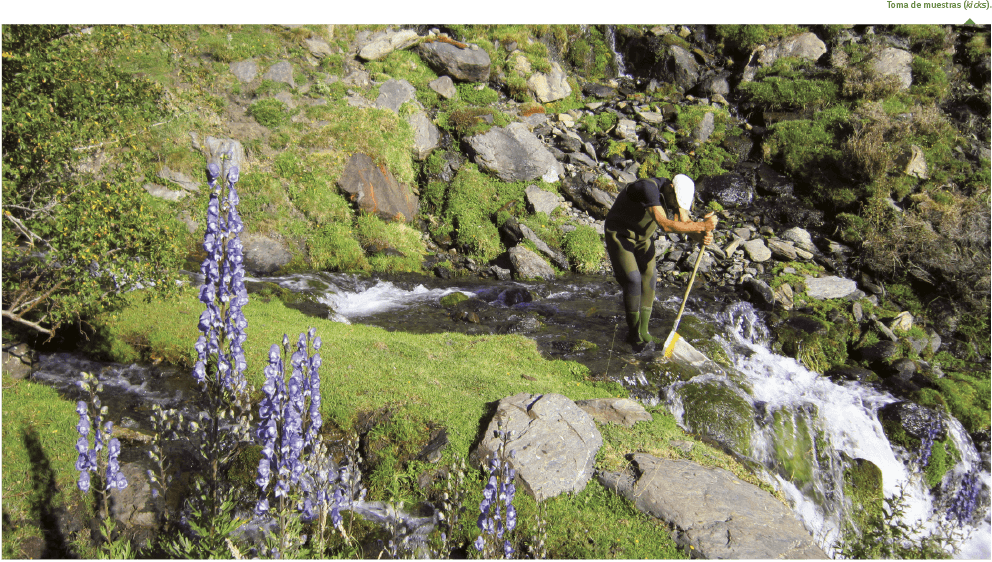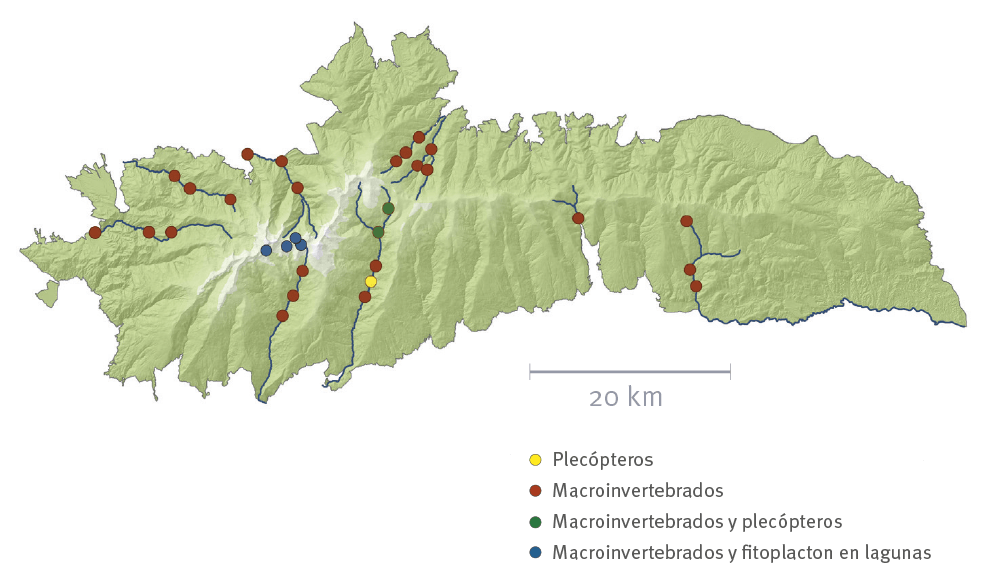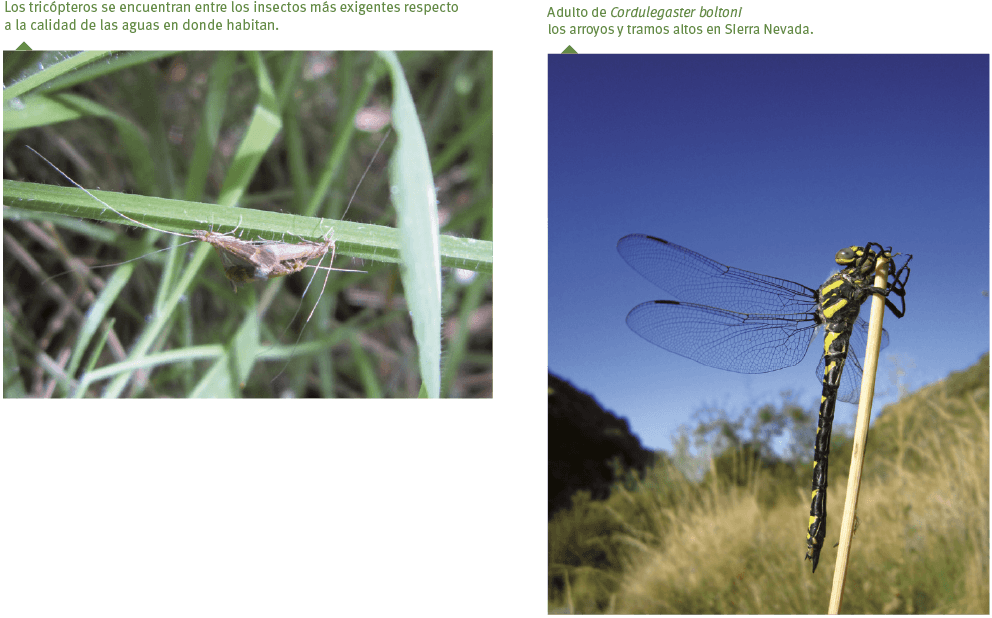Aims

The aims of this monitoring methodology are: to detect possible changes in the distribution and abundance of the benthonic communities, modifications in the phenology, and the distribution in elevation of the species considered stenothermal of cold water (Plecoptera), and the possible colonization by more tolerant species at high temperatures (euritherms).

Method and effort
Rivers:
A methodology compatible with the Water Framework Directive is implemented. The samplings are made in 23 localities distributed in 8 rivers of Sierra Nevada, where aquatic macroinvertebrates are sampled by an evaluation protocol. This method consists of:
- Selecting 100 m of a stretch of river where the most frequent habitats are represented (hard substrates, plant detritus, banks with vegetation, submerged macrophytes, fine sediments). The covering (%) of the habitat types determines the number of samples (20) that correspond to each habitat.
- At each sampling point, the samples are taken with a hand net square in section (0.25 m x0.5 m), using the hands and feet to stir the substrate situated at 0.5 m from the mouth of the net. Once the samples are collected, the contents are fixed in 96% alcohol.
- These samples are determined with a minimum of up to the family level in order to apply the biological-quality index IBMWP “Iberian Biomonitoring Working Party”.
In the case of monitoring of the phenology of Plecoptera, qualitative and quantitative samples are taken of nymphs as well as adults in the Trevélez river at three different elevations (1500, 2000, and 2500 m). For the nymphs, a Surber net (40 x 40 cm) is used in 6 sweeps, while for adults, a transect (50 m long by 5 m wide) is sampled on both banks, where the riparian vegetation is beaten with an entomological rod while looking for adults hidden among the rocks. These adults are placed in 10-ml vials containing 70% alcohol to be separated and identified to the species level.
Lakes:
In the case of high-mountain lakes, macroinvertebrate samples are collected by semi-quantitative sampling. The kicking method is used with hand nets of 300 μm grid size, and all the organisms within the zones accessible to the water mass are captured.
In these enclaves, the phytoplankton community was also sampled by filtering the nets and collecting known volumes of water at different heights in the water column. The composition and abundance are studied by sampling in various positions of the water column and by qualitative sampling. The qualitative samplings are taken by dragging a conical net of 60 μm grid size on the surface (1 m deep) and at the lower limit of the photic layer. For the quantitative analysis of phytoplankton and chlorophyll, a water volume is taken from a sample with the use of a Van Dorn bottle.
The sampling of diatoms enables the relative population density of each species to be established in reference to the surface sampling by the detailed count. The population density and relative abundance are determined for the different species by removing rocks from the lake bed or from the upper part of the mud. From each lake, three replicates are collected.

Periodicity
Samples were taken at each study site in spring, summer, and autumn, while Plecoptera phenology was sampled monthly at each station of Trevélez river.
References
Clarke, A., Mac Nally. R., Bond, N. y Lake, P.S. 2008. Macroinvertebrate diversity in headwater streams: a review. Freshwater Biol., 53: 1707–1721.
Bonada, N., Rieradevall, M. y Prat, N. 2007. Macroinvertebrate community structure and biological traits related to flow permanence in a Mediterranean river network. Hydrobiologia, 589: 91-106.
Alba-Tercedor, J. 1979. Larvas de plecópteros de las estribaciones de Sierra Nevada (Granada). Factores que intervienen en su distribución. Boln. Asoc. Esp. Entom., 3: 193-198.
Tierno de Figueroa, J. M., Sánchez-Ortega, A., Membiela Iglesias, P. y Luzón-Ortega, J.M. 2003. Plecoptera. Fauna Ibérica (vol. 22) . Ramos, M.A. et al. (Eds.). Museo Nacional de Ciencias Naturales. CSIC. Madrid. 404 pp.